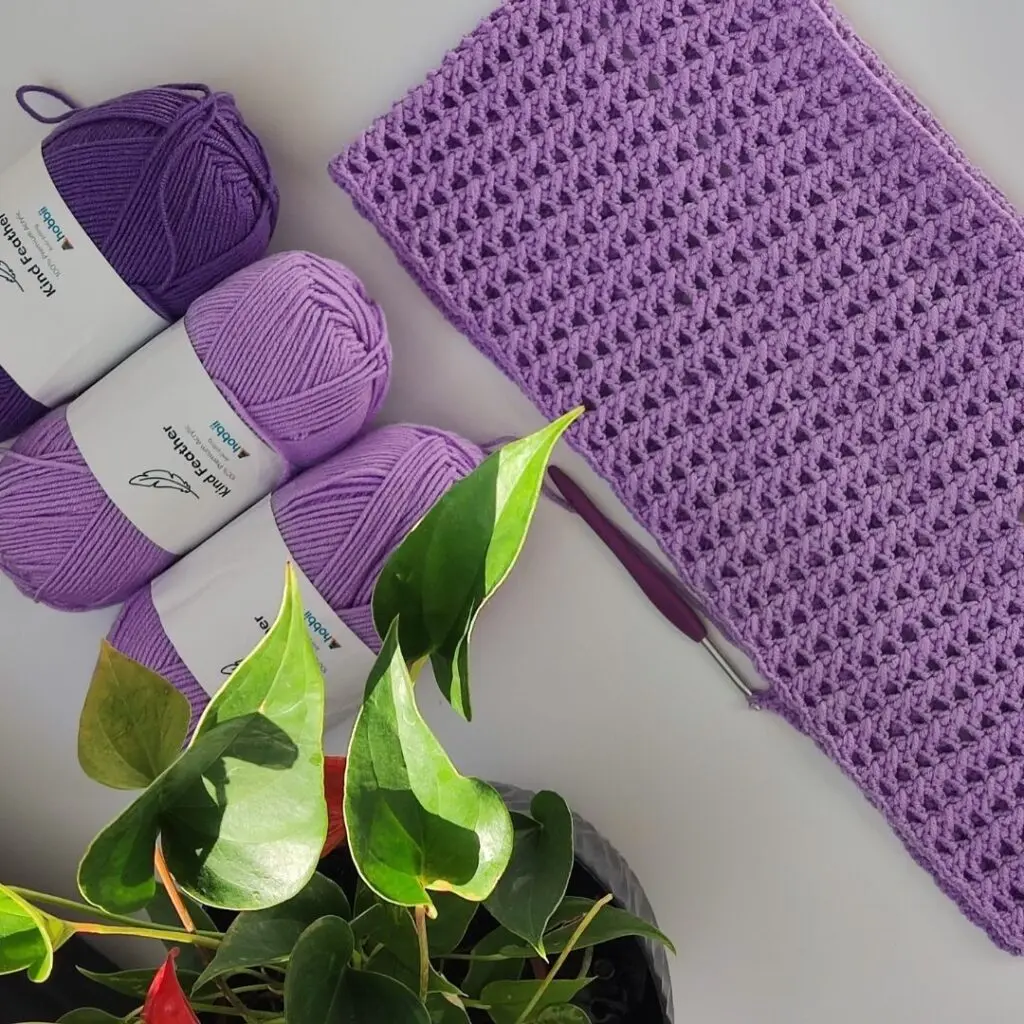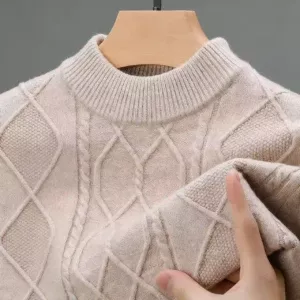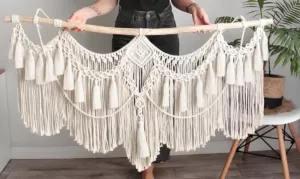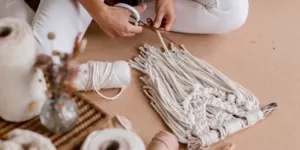Best Yarn for Crochet – Crochet, a timeless and elegant craft, has captured the hearts of countless artisans across generations. Rooted in the simple act of creating stitches from yarn using a crochet hook, this versatile technique offers endless possibilities. From delicate laces and cozy blankets to chic clothing and playful amigurumi, crochet enables crafters to weave creativity into every loop and stitch. However, one key element that significantly influences the outcome of crochet projects is the yarn used.
The best yarn for crochet can vary greatly depending on the project at hand, encompassing factors such as texture, weight, and fiber content. For beginners, navigating the extensive variety of available yarns can be overwhelming, yet choosing the right yarn is crucial for both the process and the final product. Yarn selection not only affects the ease of crocheting—especially important for those new to the craft—but also determines the appearance, feel, and durability of completed projects.
This guide targets crochet beginners, providing essential insights into the best yarn for crochet beginners and highlighting recommendations for the best yarn for crochet clothes. Understanding the fundamental aspects of yarn selection will empower novices to make informed decisions, laying a solid foundation for their crochet journey and ensuring a delightful crafting experience from start to finish.
Best Yarn for Crochet Beginners
When embarking on the crochet journey, the vast selection of yarns available can seem daunting. Choosing the right yarn is pivotal for beginners, as it can greatly influence both the learning experience and the success of initial projects. Recognizing the characteristics of beginner-friendly yarns and understanding the key factors in selecting the perfect start-up yarn can make the process much smoother and more enjoyable.
Characteristics of Beginner-Friendly Yarns:
Beginner yarns should be easy to work with, allowing new crocheters to easily see their stitches and make corrections as needed. Durability is also important, as beginners will likely need to undo and redo stitches frequently while perfecting their technique. Moreover, the yarn should be forgiving of mistakes and maintain its structure despite multiple manipulations.
Top Considerations for New Crocheters:
- Yarn Weight: Medium weights, such as worsted or aran, are ideal for beginners. These yarns are thick enough to handle comfortably and make stitches clearly visible.
- Fiber Content: Synthetic or easily cared for natural fibers are best for beginners. They provide ease of maintenance and are generally more affordable.
- Color Variety: Yarns that come in a wide range of colors can make learning more enjoyable. Bright or light colors are particularly advantageous, as they make it easier to see stitches.
Recommended Yarns for Beginners:
- Acrylic Yarns: These yarns are an excellent choice for beginners due to their affordability and wide availability. Acrylic is also very durable, which is beneficial for projects that may undergo frequent manipulation. Its wide range of colors allows for exploration and creativity, making learning to crochet a vibrant and fun experience. Furthermore, acrylic yarns are easy to care for, which is convenient for those just starting out.
- Cotton Yarns: Cotton is another fantastic option for crochet newcomers. It’s particularly useful for practicing due to its non-elastic nature and the crisp, clean stitch definition it offers. This helps beginners in clearly seeing and understanding the construction of their stitches and patterns. While cotton may not be as forgiving as acrylic in terms of undoing and redoing work, its stability and clarity are invaluable for developing solid crochet skills. Additionally, cotton is an excellent choice for projects that require a sturdier fabric, such as dishcloths or coasters.
Understanding Crochet Yarn Types
Selecting the appropriate yarn is crucial for any crochet project, but it can be particularly daunting for those new to the craft. Understanding the differences among yarn types, their compositions, and how they can affect your crocheting can greatly enhance your experience. Here we’ll explore the basic types of yarn fibers, common yarn weights, and the role of textured yarns in crochet.
Basic Overview of Yarn Fibers:
Yarn can be made from a wide variety of fibers, each bringing unique characteristics. Fibers can be broadly categorized into two groups: natural and synthetic.
- Natural Fibers: These include animal-based fibers like wool and alpaca, plant-based fibers such as cotton and bamboo, and luxury fibers like silk and cashmere. Natural fibers are often praised for their breathability, softness, and durability but can be more expensive and require more care during washing and drying.
- Synthetic Fibers: These fibers, such as acrylic and polyester, are man-made. They are generally more affordable, easier to care for, and often hypoallergenic, making them a popular choice for many beginners. Synthetic yarns can vary widely in texture and performance, some mimicking natural fibers very closely.
Common Yarn Weights and Their Suitability for Beginners:
Yarn weight refers to the thickness of the yarn strand and is crucial in determining the size of the hooks used, the drape of the finished project, and how quickly a project can be completed.
- Light Yarns (DK, Sport): These yarns are thinner and can be great for more delicate projects. However, they can be a bit challenging for absolute beginners because the stitches are smaller and require more precision.
- Medium Yeghts (Worsted, Aran): These are ideal for beginners. They are thick enough to handle comfortably, making them great for a wide variety of projects from scarves to blankets. They also work up quickly, providing gratifying results for new crocheters.
- Bulky and Super Bulky: These yarns allow for very quick projects due to their large size but can be cumbersome and might obscure stitch definition, making it difficult for beginners to spot and correct errors.
Discussion of Textured Yarns and Their Impact on Learning to Crochet:
Textured yarns include those with uneven surfaces like boucle, tweed, or chenille. While these yarns can create interesting and attractive finished objects, they might not be suitable for beginners due to their complex appearances, which can obscure stitch definition. It’s often difficult for beginners to identify where to insert the hook, which can be discouraging and lead to uneven work.
For those just starting, it’s recommended to begin with smoother yarns to gain confidence in producing and recognizing basic stitches. Once these skills are comfortably mastered, experimenting with textured yarns could be a delightful next step, adding variety and challenge to crochet projects.
Understanding the types of yarn, their weights, and textures not only enriches the crafting experience but also empowers crocheters to make knowledgeable choices that best suit their skills and the projects they wish to undertake.
Best Yarn for Crochet Clothes
Creating crochet clothing is a rewarding and enjoyable way to expand your crafting skills. To ensure that your garments are comfortable, durable, and easy to care for, it’s crucial to choose the right yarn. Here we’ll discuss the factors to consider when selecting yarn for clothing, recommend specific yarns for apparel-making, and explore the benefits of various yarn blends and plant-based yarns.
Factors to Consider When Choosing Yarn for Clothing
- Drape: This refers to how a fabric hangs when worn. Yarns that create a good drape result in garments that flow nicely and fit comfortably. Often, fibers like silk, bamboo, and Tencel are favored for their excellent drape.
- Comfort: Since clothing is worn directly against the skin, the yarn should feel gentle and non-irritating. Soft fibers like fine cotton, merino wool, and bamboo are great choices.
- Care Instructions: Consider how the garment will need to be washed and cared for. Natural fibers often require more delicate care, while many synthetic fibers can withstand machine washing and drying.
Recommended Yarns for Apparel
- Cotton Yarn: Lightweight and breathable, cotton is perfect for summer wear. It’s also strong and washes well, making it ideal for everyday garments.
- Wool Yarn: Excellent for winter wear due to its warmth. Merino wool, in particular, is softer against the skin than regular wool and less likely to cause itching.
- Acrylic Yarn: While not as breathable as natural fibers, acrylic is durable and easy to care for, making it a popular choice for children’s clothing and everyday wear.
Blend Yarns (Cotton-Acrylic, Wool-Acrylic)
Blend yarns combine the best characteristics of both fibers, providing a balance of comfort and ease of care.
- Cotton-Acrylic Blends: These yarns offer the softness and breathability of cotton with the durability and easy care of acrylic. They are excellent for transitional season wear like spring or fall tops.
- Wool-Acrylic Blends: By blending wool with acrylic, you get the warmth of wool with enhanced durability and easier maintenance. These yarns are suitable for winter garments that require less frequent washing and can endure more rigorous use.
Bamboo and Other Plant-Based Yarns
- Bamboo Yarn: Known for its silky texture and excellent breathability, bamboo is a superb choice for comfortable wearables. It’s naturally antibacterial and ideal for sensitive skin. Bamboo yarn also provides a beautiful drape, suited for elegant dresses and soft shirts.
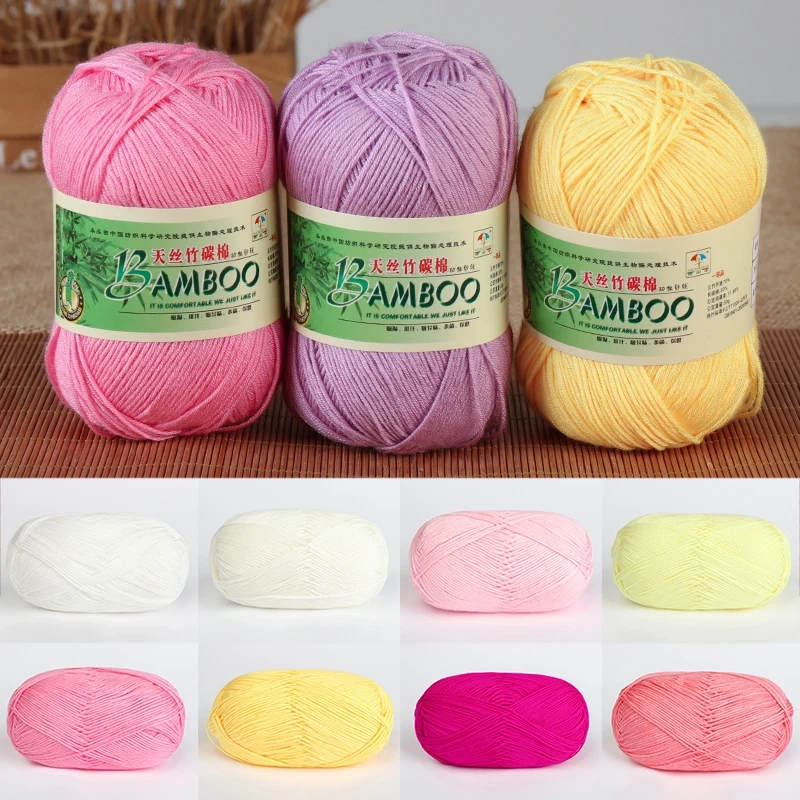
Soft Thick Fiber Yarn Bamboo Cotton Yarn
Designed with both comfort and durability in mind, this eco-friendly bamboo cotton yarn is perfect for those who appreciate the artistry of DIY projects.
- Other Plant-Based Yarns: Yarns like hemp, linen, and Tencel are gaining popularity due to their environmental benefits and unique properties. Linen, for instance, is extraordinarily durable and perfect for lightweight summer wear, whereas Tencel is known for its silky smoothness and moisture-wicking properties.
When selecting yarn for crochet clothing, consider not only the final appearance and feel of the garment but also how it will be used and maintained. Yarns like bamboo and blended fibers offer practical solutions that cater to both comfort and convenience, making them excellent choices for crafting stylish, wearable crochet items.

